What's New
Displaying results 3601 - 3610 of 4052
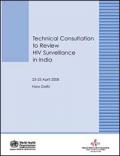
Resource | Publications,
Since the first HIV infection was reported in India in 1986, the epidemic continues to grow. India has the third highest HIV burden in the world with an estimated 2.5 million (range: 2–3.1 million) people living with HIV in 2006. HIV surveillance in India began in 1985 and has substantially expanded over the years. Presently, the following mechanisms are used to track the epidemic: HIV sero surveillance for different populations in 1122 sentinel sites; nationally representative behavioural surveillance surveys in a sample of 100 000 general population and 20 000 in populations with high-risk behaviours; AIDS case reporting from all states; and surveillance for STIs from more than 900 facilities across the country.
This report summarizes the discussions and recommendations of the Technical Consultation to Review HIV Surveillance in India.
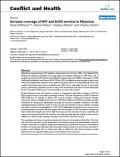
Resource | Publications,
Myanmar is experiencing an HIV epidemic documented since the late 1980s. The National AIDS Programme national surveillance ante-natal clinics had already estimated in 1993 that 1.4% of pregnant women were HIV positive, and UNAIDS estimates that at end 2005 1.3% (range 0.7–2.0%) of the adult population was living with HIV. While a HIV surveillance system has been in place since 1992, the programmatic response to the epidemic has been slower to emerge although short- and medium-terms plans have been formulated since 1990. These early plans focused on the health sector, omitted key population groups at risk of HIV transmission and have not been adequately funded. The public health system more generally is severely under-funded.
By the beginning of the new decade, a number of organisations had begun working on HIV and AIDS, though not yet in a formally coordinated manner. The Joint Programme on AIDS in Myanmar 2003–2005 was an attempt to deliver HIV services through a planned and agreed strategic framework. Donors established the Fund for HIV/AIDS in Myanmar (FHAM), providing a pooled mechanism for funding and significantly increasing the resources available in Myanmar.
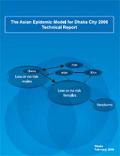
Resource | Publications,
HIV prevalence has remained at a very low level in Bangladesh. There have been only 874 HIV and AIDS cases detected in the country, and UNAIDS estimated about 11,000 adult infections in 2005. But surveillance and other epidemiological data indicate that the situation may be changing. Trends in reported cases have been steadily increasing over the last few years, and there is now a concentrated HIV epidemic among injection drug users (IDU) in a locality in Central Bangladesh.
Seven rounds of serological surveillance since 1998 have generally found extremely low HIV levels (less than percent) in female, male, and transgender sex workers, men who have sex with men, and occupational groups of men that may be more vulnerable to HIV [4-9]. The significant increase in HIV infections among IDU was found in 2004-2005 in the sixth round of national HIV Serological Surveillance (HSS), when 4.9 percent of all the injectors surveyed in Central City-A tested positive. This trend continued in the seventh round of national serological surveillance (2005-2006) so that 7.0 percent of all the injectors surveyed tested positive.
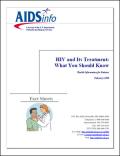
Resource | Fact Sheets,
These fact sheets are intended for use by people recently diagnosed with HIV infection or those who are considering starting HIV treatment. The fact sheets are designed as a series, but can also be used as stand-alone documents. Information in these fact sheets is based on Guidelines for the Use of Antiretroviral Agents in HIV-1-Infected Adults and Adolescents, developed by the U.S. Department of Health and Human Services (HHS) Panel on Antiretroviral Guidelines for Adults and Adolescents, which is convened by the HHS in conjunction with the Henry J. Kaiser Family Foundation.
The Guidelines, which is a "living document," provides updates on new advances in the treatment of HIV.
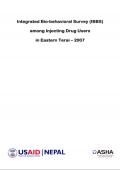
Resource | Publications,
This report details the findings of the third round of IBBS conducted among 345 male IDUs in the Eastern Terai. The primary objective of the study was to collect strategic information to analyze trends in risk behavior and HIV and STI knowledge and prevalence among IDUs.
The study was conducted among IDUs in the three districts of Jhapa, Morang and Sunsari in the Eastern Terai. A total of 345 male IDUs were sampled using a two-stage cluster sampling methodology.
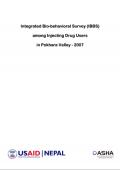
Resource | Publications,
This report details the findings of the third round of IBBS conducted among 300 male IDUs in the Pokhara Valley. The primary objective of this study was to collect strategic information to analyze trends in risk behavior and HIV and STIs among IDUs.
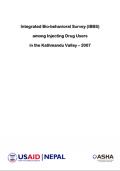
Resource | Publications,
This report details the findings of the third round of the Integrated Biological and Behavioral Surveys (IBBS) conducted among 300 male Injecting Drug Users (IDUs) in the Kathmandu Valley. The primary objective of this study was to collect strategic information to analyze trends in risk behavior and HIV and STIs among IDUs.
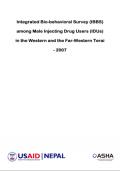
Resource | Publications,
This report details the findings of the second round of Integrated Biological and Behavioral Surveys (IBBS) conducted among 300 male Injecting Drug Users (IDUs) in the Western and Far Western Terai. The primary objective of this study was to collect strategic information needed to analyze trends in risk behavior and HIV/STI infection among IDUs.
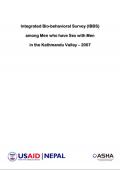
Resource | Publications,
This report documents the findings of the second round of the Integrated Biological and Behavioral Surveys (IBBS) conducted among 400 Men who have Sex with Men (MSM) in the Kathmandu Valley. The primary objective of the study was to collect strategic information to analyze trends in risk behavior and HIV/STI prevalence rates among MSM.

Resource | Publications,
“Why you?” “Why this job?” – these are the questions which sexual service providers (SSP) are most commonly asked by male clients; it is as though the man, after being sexually serviced, cannot quite believe that a young woman like this could be doing sex work. The questions suppose that there are other choices open to these women other than sex work, and arguably, they imply at the same time that only certain types of woman do this work as it must be degrading to do so. This study attempts to address these presumptions and allows the reader to hear as it were, the answers (for there are many) to these questions.





